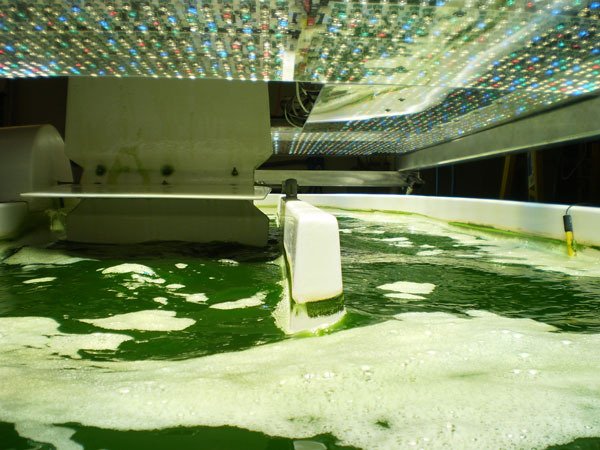by ALANA LINDEROTH
Sequim Gazette
Scientists at Pacific Northwest National Laboratory’s Marine Sciences Laboratory in Sequim aim to better the techniques used to transform microalgae into biofuel.
A process, trademarked “AlgaeAirFix,” has the potential to remove the limitations surrounding the production of biofuel by maximizing the transfer of carbon dioxide from air into large-scale algal ponds using a combination of physical, chemical and biological processes.
For the next two years, researchers from the Department of Energy’s PNNL and Micro BioEngineering, Inc. will be pursue the process utilizing a recent $900,000 grant from DOE’s Bioenergy Technologies Office, Dawn Zimmerman, PNNL’s news and media relations representative, said.
Project lead and research engineer at the Marine Sciences Laboratory Michael Huesemann plans to begin research as soon as next month or May.
Huesemann has worked at PNNL for 22 years and has devoted about 15 years of his career toward microalgae research. Along with his colleagues, Huesemann is using state-of-the-art indoor ponds to identify microalgae strains with high productivity and therefore biofuel production capabilities.
The goal of the research is to select the best strains, both wild and/or engineered, of microalgae for outdoor cultivation in large-scale ponds. Huesemann also hopes to use the data gathered at the Sequim lab to choose the optimal geographic location for the envisioned large-scale outdoor pond cultivation system and match that with an ideal strain.
“If it works, it would revolutionize the microalgae biofuel industry,” Huesemann said.
Existing nowhere else but at the Marine Sciences Laboratory, the 800-liter, fiberglass, temperature-controlled indoor ponds, equipped with thousands of LED-lights that can simulate the full spectrum of sunlight allow Huesemann to mimic climate conditions encountered in outdoor ponds at any location in the world.
“We can simulate the conditions of an outdoor pond in Morocco right here in Sequim if we want,” he said. “There’s always excitement in doing research.”
Traditional methods for producing biofuel from microalgae rely on locations associated with concentrated amounts of CO2, such as flue bases from power plants, but production efficiency is hindered by location limitations.
“Basically right now in order to make biofuels from microalgae, you need concentrated CO2, which limits the process next to power plants,” Huesemann said. “But, really you also need water, sunlight and flat land (for the ponds). The uniqueness of the concept is getting microalgae to grow from air.”
Removing the dependency of microalgae biofuel production process on sources of concentrated CO2, and instead to large-scale cultivation ponds utilizing CO2 readily available in the air is estimated to produce up to 2,500 gallons of algal oil a year, Zimmerman said, meeting DOE’s microalgae biofuel program goals.
Reach Alana Linderoth at alinderoth@sequimgazette.com.



